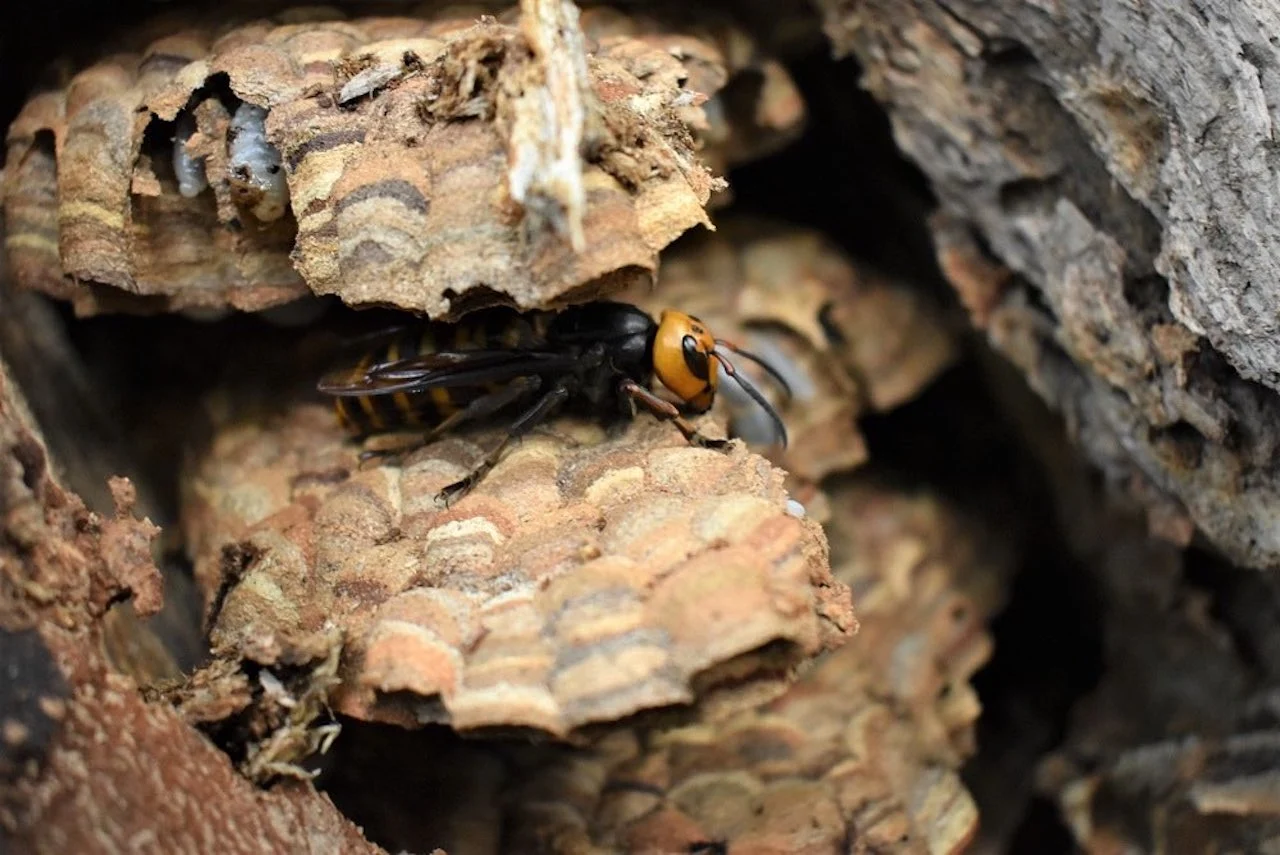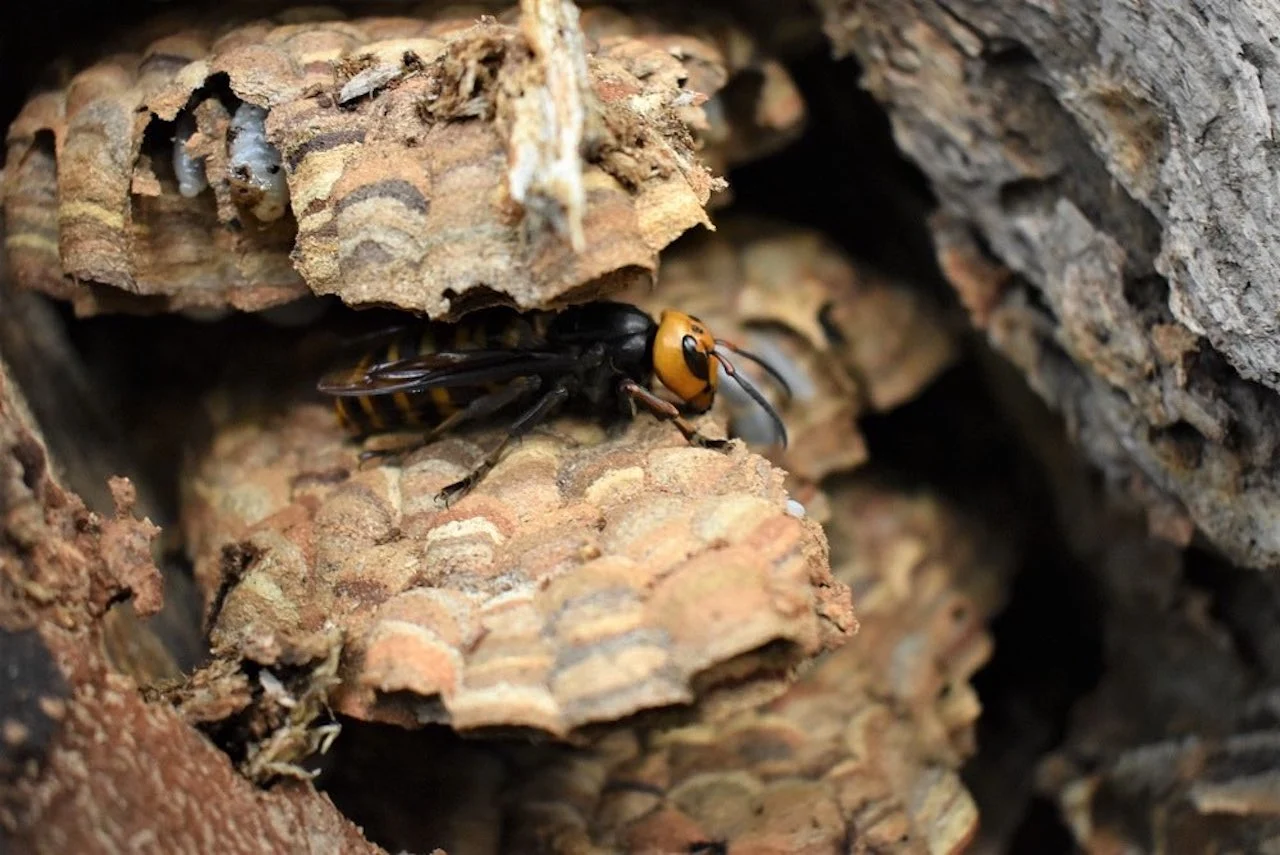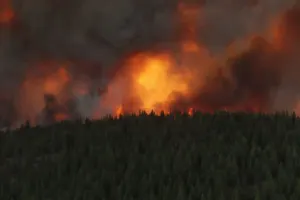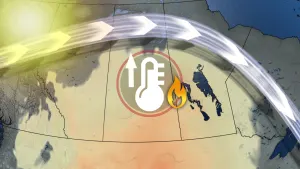
Officials terminate Asian giant hornet nest near U.S.-Canada border
The Asian giant hornet nest was discovered about 400 metres from the U.S-Canada border, stateside officials say.
Authorities with the Washington State Department of Agriculture (WSDA) have eliminated the first Asian giant hornet nest this year.
On Wednesday, the state department announced it had exterminated the first nest from the invasive species in 2021. The nest was found earlier this month in the base of a dead alder tree east of Blaine, Wash. -- approximately 400 metres from the Canada-U.S. border.
The discovery was made after an extensive search for it following a sighting of a live Asian giant hornet just a half a kilometre away from the site near Blaine, Wash., on Aug. 11. The observation was relatively close to a previous nest (about three kilometres) that was eliminated in October 2020.

(Washington State Department of Agriculture Twitter)
According to a news release, staff with the department vacuumed 113 worker hornets from the nest. Upon uncovering the nest, it was revealed the hornets had excavated the interior of the tree to make room for its den, which consisted of nine layers of comb.
WSDA staff also caught 67 additional hornets in the area with nets during the termination. The nest itself had almost 1,500 hornets in different stages of development.
“While we are glad to have found and eradicated this nest so early in the season, this detection proves how important public reporting continues to be,” Sven Spichiger, WSDA managing entomologist said in the media release. “We expect there are more nests out there and, like this one, we hope to find them before they can produce new queens. Your report may be the one that leads us to a nest.”
Anne LeBrun, national policy manager for pollinator pest programs with the U.S. Department of Agriculture’s Animal and Plant Health Inspection Service, commented in the public bulletin that the successful co-operation between state and federal agencies, and members of the public, is "paying off" in Washington.
“We are pleased to play a role in this collaborative success by sharing technical expertise, providing financial support, and collaborating on survey and research efforts,” LeBrun said in the press release. “Public involvement remains an essential part of eradicating this hornet.”
WSDA will continue to search for and trap Asian giant hornets through the end of November. The Asian giant hornets were first discovered in the United States in 2019 after an individual was reported in Whatcom County, Wash. In Canada, the invasive species first showed up in Nanaimo, B.C., that same year.
The Invasive Species Council of B.C. cautions that Asian giant hornets can deliver painful stings, posing a risk to people allergic to bees and wasps.
Those who spot an Asian giant hornet in B.C. can report it to the Invasive Species Council at 1-888-933-3722 or on its website.
Thumbnail courtesy of Washington State Department of Agriculture Twitter (@WSDAgov)
Follow Nathan Howes on Twitter.










